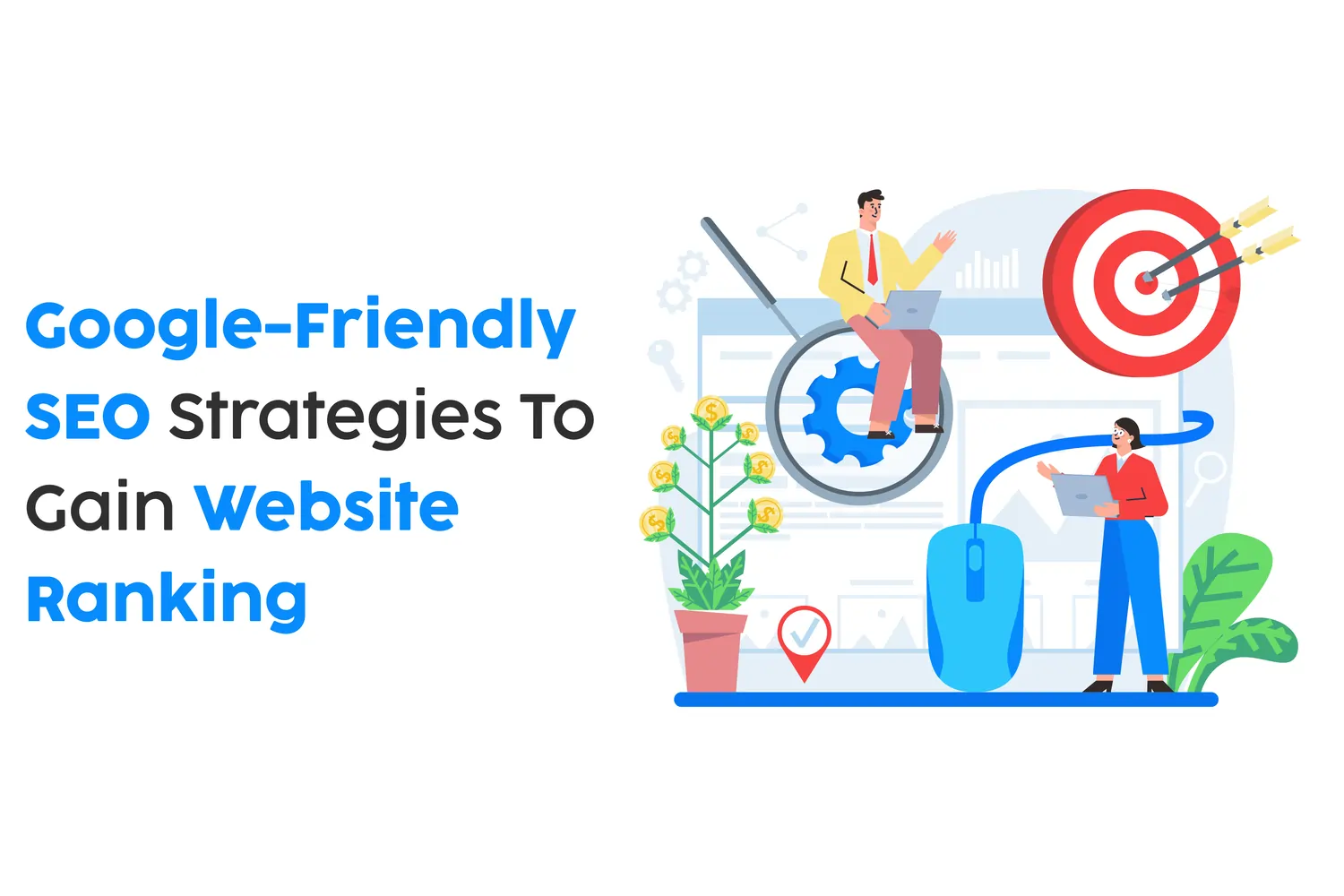
Google is currently the most used search engine and is responsible for the vast majority of online searches. As a result, it becomes one of the most important channels for the visibility of a website. If you rank top on Google, then more users may access your site and increase the traffic of your business, thus, the business will grow. Google’s algorithms have a significant impact on the website search results. These algorithms are based mostly on the quality of the content, user experience, and the technical optimization of the websites. If your page meets all the requirements of Google, it can be assumed that it will draw more visitors and, consequently, succeed in the long run.
Aligning your website with Google's guidelines is necessary for higher search ranks and preventing penalties. Algorithms developed by Google give an advantage to the websites that are appreciated because they have high-quality content, fast loading, mobile optimization, and a secure connection. Compliance ensures your site is seen as trustworthy and relevant, which boosts visibility. Non-compliance can lead to penalties which may result in a drop in the ranking, or even fail to appear in the search, thus leading to less traffic and also soaking into the credibility. Briefly, sticking to the rules appointed by Google is key to maintaining a strong online presence and achieving long-term success.
Google is the most popular search engine all over the world and the fact is that Google is a primary source for users to discover new sites thereby, it is a must-have to get web traffic at any rate. This rather implies that Google harborers could get a website into a better rank, thus attracting more visitors and potential customers it could be opened to success through Google's ranking.
It's a big deal if you appear on the top list when people are searching it through Google search as this can cause many new visitors to visit it. More people become aware of it and click on it when it starts to be on the list, which in turn brings traffic. The boost in the number of visitors is one facet of getting more of potential customers, either as leads, buyers, subscribers, etc.
Panda
Penguin
Hummingbird
Overall Impact
Reputation and Relevance: Links from sites that are legitimate and relevant to the topic of your website are certificates of approval to your content, which is a way of showing that your blog is helpful and informative. This is a signal to Google that your website is of good reputation and it gains authority.
Quality Over Quantity: The strength of some quality backlinks is better than having too many poor ones, it is much better to focus on the former. There is a lot of information that Google uses to check this data how authoritative and trustworthy your site is.
Title Tags: These are the clickable titles that appear in search results. Utilizing relevant keywords in title tags is a good way to describe your page to search engines.
Meta Descriptions: These are short descriptions that are seen below the main title on the search page. A well-written meta description including some qualifying keywords can increase the click rate of your site.
Headings: Using headings (like H1, and H2) to organize content makes it easier for users and search engines to understand the structure of your page. Properly structured headings help Google determine the main topics of your content.
Keywords: Integrating the right keywords into your content in a planned way enables Google to link it with users’ search queries. Nevertheless, keyword stuffing (overuse) is to be restrained as it can lead to down-ranking.
By focusing on these key factors, you can improve your website’s ranking on Google and enhance its overall visibility and performance.
What They Are: Regular SEO audits involve a review of your website to reveal issues and fix them that may affect its efficiency to Google’s rules.
Why They Matter: Audits detect problems like broken links (linkages that lead nowhere), duplicate content (repeated or copied content), and the use of outdated SEO practices. Addressing these problems helps you raise the site’s position in searches and keeps it aligned with Google’s directives.
What It Involves: Content optimization refers to this process of ensuring that your content is relevant, high-quality, and rightly includes the keywords that your target audience is looking for.
Why It Matters: High-quality content that is well-written and useful to users can elevate your search rankings. Additionally, it helps meet Google’s E-A-T standards—Expertise, Authoritativeness, and Trustworthiness—which are crucial for ranking well, especially in competitive or sensitive fields.
What They Are: Technical SEO is the process of optimizing your website to make it most search engine friendly and as easy as possible for search engines to crawl and index.
Key Elements:
Site Speed: A site that loads rapidly in order to improve the user experience.
Mobile-Friendliness: Make sure your site works well on smartphones and tablets.
Secure Connections (HTTPS): By encrypting your data through the use of HTTPS, you can guarantee a safe browsing experience.
Why It Matters: Implementing the necessary technical SEO plan facilitates the search engines in indexing the site and creating an overall convenient experience for the users. In this way, it can be a successful tool for a better search ranking.
What It Is: Link building is the process of getting backlinks, which are basically, backlinks from other authoritative websites to yours.
Why It Matters: Backlinks of high quality obtained from trusted websites can help increase your site recognition in the search engine and also enhance your site's performance in terms of search engine rankings.
What It Involves: To be regularly informed on the subject of the changes made to Google's algorithms, which in turn are the criteria used by the engine in the ranking of the web pages.
Why It Matters: Google revises its algorithms frequently in an effort to enhance search quality. A proactive approach to these changes is a safe way not to lose the position of the website and to keep the site in compliance with all new requirements.
What It Is: Blackhat SEO entails techniques that are not above board, meaning that exploitation and cheating can be used to at least increase the possibilities of a website appearing in the search ranking. For example:
Keyword Stuffing: overloading your content with keywords that you think will help it rank higher in the search engine.
Hidden Text: This is the technique of showing a piece of text on the page that is not visible to the visitor but is instead only detectable by the search engines. The technique is generally implemented by using the same color as the background for this text.
Link Schemes: Make your site more visible by creating fake links to sites that are of bad quality or irrelevant sources.
Why It’s Problematic: Google’s algorithms are designed to detect these deceptive practices. Google is very strict about this; because of this, a site can be removed from the search results, which will dramatically reduce its visibility and traffic. According to them, the user's site will drastically reduce its visibility and traffic.
What It Is : User experience (UX) is the term that indicates how effortless and enjoyable the interaction with your website is for users. The main components of it are:
Why It’s Problematic: Google, on the one hand, ranks sites based on user satisfaction and user engagement. Therefore, if your site cannot be navigated easily, load time is high, or instruction is not clear, users will most likely go somewhere else. A poor user experience can make your site's visibility lower as Google is very clear about the kind of sites, which is the ones that give a pleasant and meaningful experience.
What It Means: The initial measure to remove a site from a Google penalty is to know the reason why the penalty. The website owner should be able to identify the sources of the penalties. Common reasons are bad backlinks (links from spammy sites) or content that is of low quality or is duplicated.
How to Do It: One of the tools you can use is Google Search Console. This tool helps a webmaster inspect where your site is failing to meet Google’s standards, whether it’s in your content, links, or other technical areas. By understanding the problem, you can take the right steps to fix it.
Disallow Bad Links
What It Means: From time to time, your website can get backlinks from sites that contain spam or are not relevant. These bad backlinks impact your search engine rankings on Google.
How to Do It: You can eliminate this issue by using Google Disavow Tool and saying to Google that you want to ignore the annoying links. The Disavowal process includes:
Finding Bad Links: Apply tools that tell you which links are harming you.
Creating a Disavowal File: You create a record of all these bad links and then give this link to Google to remove. As a result, it is a key in your site authority raising for you to purge your link profile. Thus, this in turn can cause a higher ranking for you.
Content Cleanup and Optimization
What It Means: Content that is of low quality, duplicated, or irrelevant can lead to penalties from Google. Thus, cleaning this content is one of the key factors for the recovery.
How to Do It:
Enlarge and then take out bad content: Browse through your web page and look for materials that are not by Google's standards. You can either improve or omit these parts.
Replace It with High-Quality Content: Develop fresh content that provides value, is the same as user interest or not, and is very accurate. So, it is crucial to have content written in simple and easy words.
What It Means: Having poor quality, duplicated, or irrelevant content can lead to penalties from Google. Therefore, it is so important to get rid of such content first.
How to Do It:
Revise or Remove Poor Content: Go through your website and identify content that doesn’t meet Google quality standards. Improve it or remove it altogether.
Replace with High-Quality Content: Also, though you can come up with a new page that shows visitors the information they are seeking and which you say is very beneficial and dedicated to that subject that is OK if you also respect the optics of good writing and communicate useful information.
What It Means: In simple terms, following the elimination of the improper site circumstances generated you need to build up the reputation and the relationship of your website with Google which in turn will result in the improvement of ranking
How to Do It:
Earn High-Quality Backlinks: Be selective and look only for links from the best websites in your industry. These links signal to Google that your site is trustworthy and authoritative.
Improve Content Quality: Continuously work on providing content that shows Expertise, Authoritativeness, and Trustworthiness (E-A-T). This means creating content that is accurate, well-researched, and valuable to your audience.
Ongoing Monitoring: Regularly check your website to ensure it remains compliant with Google’s guidelines. Keep your content updated and continue building strong links. This proactive approach will help you maintain and even improve your site’s rankings over time.
Digittrix performs a comprehensive SEO audit that focuses on the issues that might be interfering with how well your site is running. This includes optimizing on-page elements like titles and meta descriptions to improve search rankings.
In conclusion, maintaining Google-friendly SEO is essential for sustained online success. By adhering to Google's guidelines, optimizing content and technical aspects, and regularly monitoring updates, you can enhance your site's visibility and credibility. Digittrix offers comprehensive services to ensure your website remains compliant, performs well in search rankings, and recovers quickly from any penalties.


Written by Harsh Abrol
With Over 14 years Experience in IT Field , Helping Companies to Optimise there Products for more Conversions
Do you need help in Digital Marketing ?




Join over 1500+ businesses we've already helped!
Google-Friendly SEO involves optimizing your website according to Google's guidelines to increase its visibility and ranking in search results. This includes creating high-quality content, ensuring a good user experience, and adhering to technical SEO best practices.
Following Google's guidelines is crucial because it helps your website avoid penalties and maintain or improve its ranking. Google prioritizes sites with high-quality content, fast load times, mobile optimization, and secure connections. Non-compliance can lead to lower rankings or removal from search results.
Google is the most popular search engine globally, making it a primary source of website traffic. Ranking higher on Google means more users are likely to visit your site, increasing your visibility and potential customer base.
Google’s algorithm updates can significantly affect your website’s ranking. Updates like Panda, Penguin, and Hummingbird have different focuses—content quality, backlink quality, and user intent, respectively. Keeping up with these changes and adapting your SEO strategy accordingly is essential for maintaining or improving your site’s ranking.
Content Quality: High-quality, relevant, and error-free content.
Technical SEO: Site speed, mobile-friendliness, and secure connections (HTTPS).
User Experience: Easy navigation, fast load times, and responsive design.
Backlinks: High-quality, relevant backlinks from authoritative sites.
Black Hat SEO Techniques: Such as hidden text, link schemes, and etc.
Duplicate Content: Repetitive or copied content across multiple pages or sites.
Ignoring Mobile Optimization: Failing to ensure your site works well on mobile devices.
Neglecting User Experience: Poor navigation, slow load times, and unclear calls to action.

©2025Digittrix Infotech Private Limited , All rights reserved.